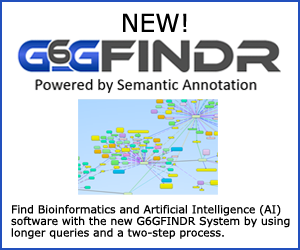MassBank
Category Metabolomics/Metabonomics>Knowledge Bases/Databases/Tools
Abstract MassBank is a mass spectral database of experimentally acquired high resolution mass spectrometry (MS) spectra of metabolites. It is one of the first public repositories of mass spectra of small chemical compounds for life sciences (less than 3,000 Da).
The database contains 605 electron-ionization mass spectrometry (EI-MS), 137 fast atom bombardment MS and 9,276 electrospray ionization (ESI)-MS/MS data of 2,337 authentic compounds of metabolites;
11,545 EI-MS and 834 other-MS data of 10,286 volatile natural and synthetic compounds; and 3,045 ESI-MS2 data of 679 synthetic drugs contributed by 16 research groups (as of January 2010).
ElectroSpray Ionization-Tandem Mass Spectrometry (ESI-MS2) data were analyzed under non-standardized, independent experimental conditions.
MassBank is a distributed database. Each research group provides data from its own MassBank data servers distributed on the Internet.
MassBank users can access either all of the MassBank data or a subset of the data by specifying one or more experimental conditions.
In a spectral search to retrieve mass spectra similar to a query mass spectrum, the similarity score is calculated by a weighted cosine correlation in which weighting exponents on peak intensity and the mass-to-charge ratio are optimized to the ESI-MS2 data.
MassBank also provides a merged spectrum for each compound prepared by merging, the analyzed ESI-MS2 data on an identical compound, under different collision-induced dissociation conditions.
Data merging has significantly improved the precision of the identification of a chemical compound by 21-23% at a similarity score of 0.6. Thus, MassBank is useful for the identification of chemical compounds and the publication of experimental data.
Research groups contributing to the repository make their mass spectral data available to the public as supporting experimental data for other researchers.
MassBank accepts mass spectral data analyzed on chemical compounds using optimized, up-to-date analytical methods. It is also one of the first internationally allied spectral databases.
As contributors deposit their mass spectral data, Not on a centralized repository, but on their own MassBank data servers, the contributed data and their quality are Not mixed but independent from those of other contributors.
Users of MassBank are provided with informatics tools to search the distributed data for identification of chemical compounds detected by mass spectrometry.
MassBank Tools for users --
Spectral Search -
Spectral Search retrieves MS/MS data identical with or similar to the query data. The search results are output in the order of the similarity score together with the number of identical product ions.
MassBank currently adopts the database search algorithm that calculates the similarity score based on a modified cosine correlation (as stated above...).
By displaying the search results peak-by-peak on a three-dimensional display, users can identify peaks in a database mass spectrum that are common to peaks in the query mass spectrum.
MassBank also provides a batch service for heavy users who submit many MS/MS data as queries to the search service.
Quick Search and Substructure Search -
MassBank features two (2) tools to search for chemical compounds in its repository: Quick Search and Substructure Search.
1) Quick Search - retrieves chemical compounds by the chemical name, chemical formula and a list of the m/z and relative intensity values. The search results show the chemical compounds with their chemical names, spectral data and chemical structure.
2) Substructure Search - retrieves chemical compounds containing a specified chemical substructure as a part of their chemical structure. Users can select three (3) different search options depending on how many p electrons in the query substructure are included in the target structures.
The number of p electrons should be a) the same, b) higher in the target data or c) ignored.
Peak Search and Peak Difference Search -
Peak Search retrieves MS/MS data containing the peaks specified by the m/z values within a specified error allowance. Peak Difference Search shows chemical compounds containing one or more peak pairs whose m/z values are different from each other by the specified m/z values.
Peak Search Advanced -
Peak Search Advanced is similar to Peak Search and Peak Difference Search in function, but it is different in that it specifies the peaks with the molecular formulae of the ions.
Peaks in the merged data are annotated by the chemical formula within an error range of 50 ppm (the threshold is adjustable).
Currently, there are 817 positive and 797 negative ESI-QqTOF-MS/MS merged data available as the target for Peak Search Advanced.
Merged mass spectra as artificial reference mass spectra for metabolite identification -
One of the most important applications of MassBank data in the life sciences is metabolite identification.
Generally, ESI-MS/MS data of chemical compounds are useful as reference data for metabolite identification when the analytical conditions of the query ESI-MS/MS data are the same as or very similar to those of the reference mass spectra.
When the query and the reference chemical compounds are the same, the spectral search retrieves the reference mass spectrum with higher similarity scores. In other cases, the query and reference mass spectra are less similar or different even when the two chemical compounds are the same.
As most MassBank users may encounter the latter situation, MassBank provides an artificial reference, which is the ‘merged’ mass spectrum.
MassBank API services -
The MassBank Application Programming Interface (API) and the Simple Object Access Protocol (SOAP) interface to MassBank, allows users to write their own programs for accessing, customizing, and utilizing MassBank.
Currently available methods are downloadable and described by a schema in Web Service Definition Language (WSDL), are Spectral Search, Peak Search and Peak Difference Search.
MassBank Documentation -
Manuals for using the search tools, preparing the data in the MassBank record format, installing the MassBank system and for managing data on MassBank servers are available from the MassBank Manual download site.
System Requirements
MassBank is currently available in Linux and Microsoft Windows versions.
Manufacturer
- Institute for Advanced Biosciences (IAB)
- Keio University
- Tsuruoka, Yamagata 997-0035, Japan
- E-Mail: massbank@iab.keio.ac.jp
Manufacturer Web Site MassBank
Price Contact manufacturer.
G6G Abstract Number 20669
G6G Manufacturer Number 104172







